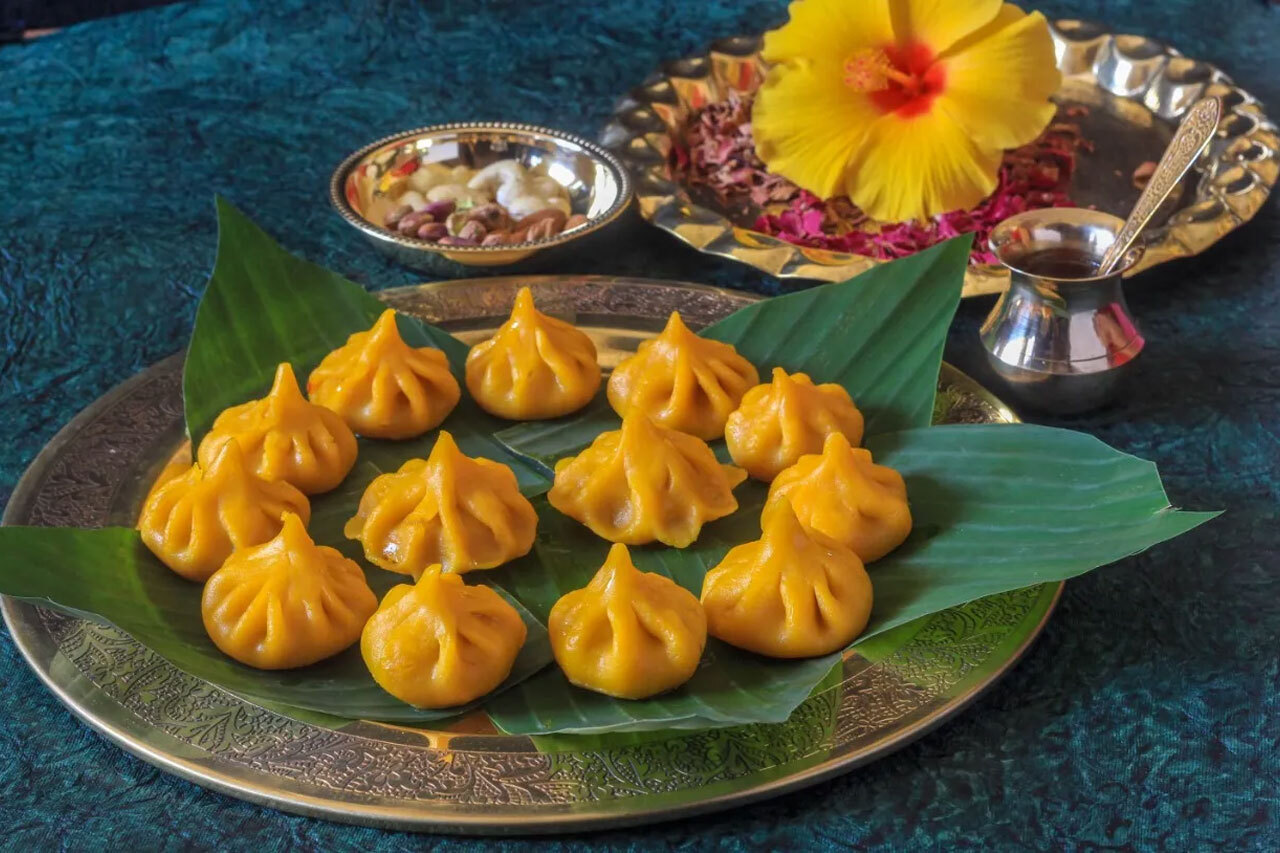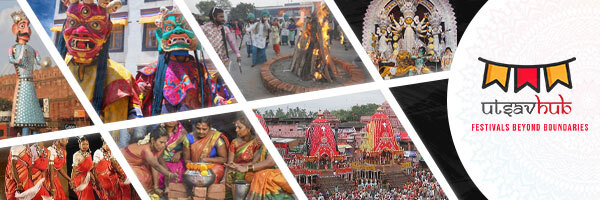
Modak A Divine Delight for Festive Celebrations
- utsavhub.com
- 25 April 2024
- Festival Recipes
- 0 Comments
Savour the divine sweetness of Modak, a traditional Indian sweet synonymous with auspicious festivals and religious rituals. Originating from the state of Maharashtra, Modak holds a special place in the hearts and palates of devotees, symbolising the joy and abundance of festive occasions. In this blog post, we explore the origins, cultural significance, traditional variations, modern adaptations, and share tips and tricks for crafting the perfect Modak, unravelling the secrets behind its heavenly taste and spiritual essence.
Origins and Cultural Significance
Modak finds its origins in Hindu mythology, particularly associated with the beloved deity Lord Ganesha, the remover of obstacles. Legend has it that Modak was Lord Ganesha’s favourite sweet, often offered to him as a symbol of devotion and love. The name “Modak” is derived from the Sanskrit word “mod,” meaning happiness or joy, signifying the blissful experience of indulging in this delectable treat. Traditionally prepared during Ganesh Chaturthi and other festive occasions, Modak is believed to bring blessings of prosperity, success, and fulfilment to those who partake in it.
Traditional Variations
In its traditional form, Modak consists of a sweet filling encased in a delicate rice flour dough and steamed to perfection. The filling typically comprises grated coconut, jaggery (unrefined cane sugar), cardamom powder, and chopped nuts, creating a rich and aromatic blend of flavours. The dough is shaped into small dumplings and sealed with intricate pleats, resembling a miniature rice pot or dumpling, symbolising abundance and prosperity. Variations of Modak may include savoury fillings such as sesame seeds, lentils, or spices, offering a savoury twist to this beloved sweet.
Modern Variations
With evolving culinary trends and tastes, modern variations of Modak have emerged, offering creative twists and flavour combinations to suit contemporary pilates. Health-conscious versions may use alternative sweeteners such as dates, honey, or stevia in place of jaggery, while gluten-free flours like almond flour or millet flour provide alternatives for those with dietary restrictions. Innovative fillings such as chocolate, dried fruits, or flavoured nuts add a modern flair to traditional Modak recipes, appealing to a diverse range of preferences.
Tips and Tricks for Perfect Modak
- Prepare the dough with care: Ensure that the rice flour dough is smooth, pliable, and free of lumps to facilitate easy shaping and steaming.
- Balance the sweetness: Adjust the amount of jaggery or sweetener according to your taste preferences, keeping in mind that the sweetness will intensify slightly as the Modak cooks.
- Keep the filling moist: Add a teaspoon of ghee (clarified butter) to the filling mixture to keep it moist and prevent it from drying out during steaming.
- Seal the Modak properly: Use gentle pressure to seal the edges of the Modak dough, ensuring that there are no gaps or openings that could cause the filling to leak out.
- Steam with precision: Steam the Modak over medium heat for the perfect amount of time, ensuring that they are cooked through but still retain their shape and texture.
- Garnish with finesse: Decorate the steamed Modak with a sprinkle of grated coconut, saffron strands, or edible silver foil for an elegant finishing touch.
In conclusion, Modak stands as a sacred symbol of devotion, joy, and abundance, embodying the spiritual essence of festive celebrations in India. Whether enjoyed during Ganesh Chaturthi, Diwali, or other auspicious occasions, Modak brings families and communities together in a spirit of love, gratitude, and togetherness. As we continue to honour tradition and embrace innovation in our culinary creations, may the divine sweetness of Modak fill our hearts with blessings and our lives with happiness.






